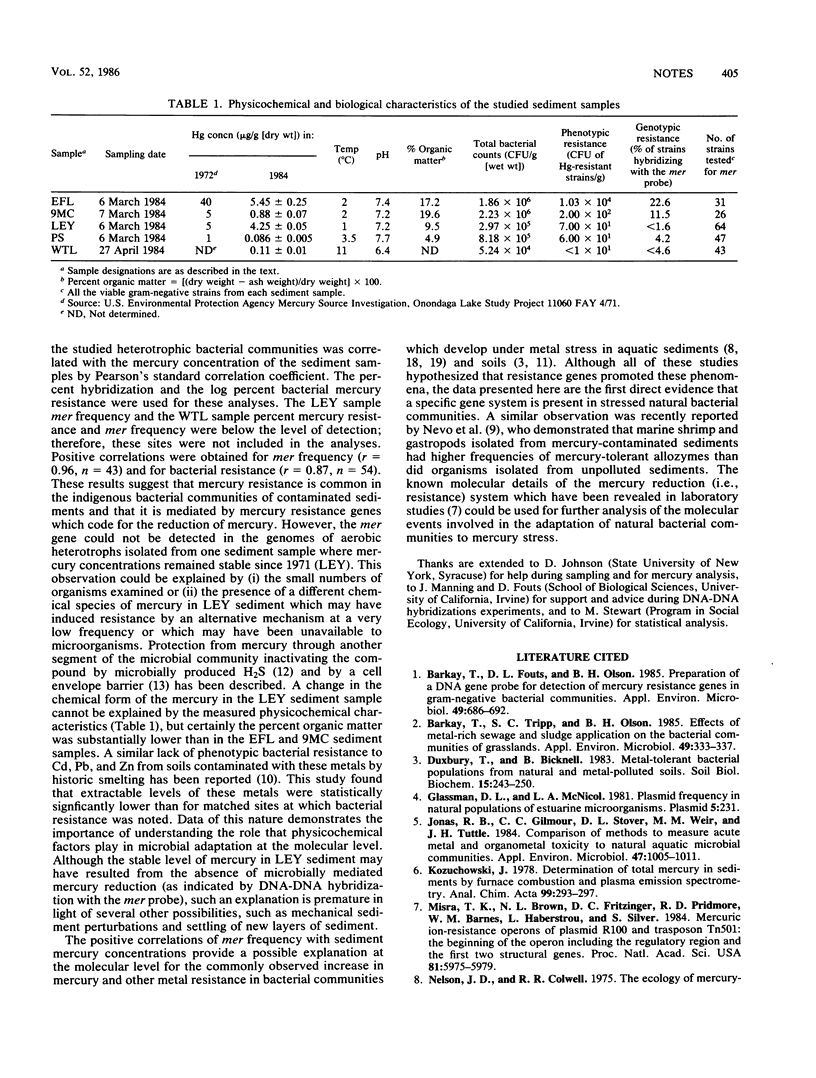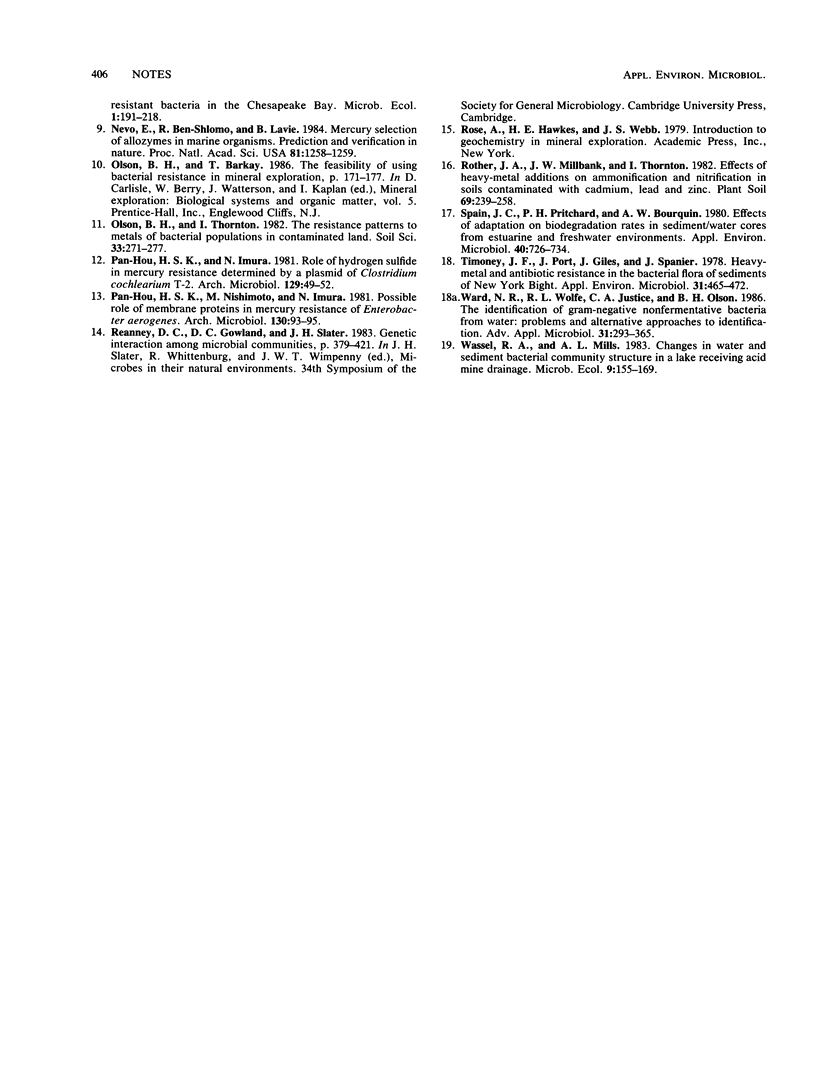Abstract
The effects of mercury contamination of lake sediments on the phenotypic and genotypic mercury resistance of the indigenous heterotrophic aerobic bacterial communities were investigated. Strong positive correlations between mercury sediment concentration and the frequency of the gene coding for mercury volatilization (mer) (r = 0.96) or the phenotypic mercury resistance (r = 0.86) of the studied communities suggested that the inheritance via selection or genetic exchange of the mer gene had promoted bacterial adaptation to mercury. Failure to detect the mer gene in one mercury-contaminated sediment where phenotypic expression was low suggested that other mechanisms of resistance may partially determine the presence of mercury-resistant organisms in mercury-contaminated sediment or that the mercury in this particular sediment was very chemically limited in its availability to the microorganisms.
Full text
PDF



Selected References
These references are in PubMed. This may not be the complete list of references from this article.
- Barkay T., Fouts D. L., Olson B. H. Preparation of a DNA gene probe for detection of mercury resistance genes in gram-negative bacterial communities. Appl Environ Microbiol. 1985 Mar;49(3):686–692. doi: 10.1128/aem.49.3.686-692.1985. [DOI] [PMC free article] [PubMed] [Google Scholar]
- Barkay T., Tripp S. C., Olson B. H. Effect of metal-rich sewage sludge application on the bacterial communities of grasslands. Appl Environ Microbiol. 1985 Feb;49(2):333–337. doi: 10.1128/aem.49.2.333-337.1985. [DOI] [PMC free article] [PubMed] [Google Scholar]
- Jonas R. B., Gilmour C. C., Stoner D. L., Weir M. M., Tuttle J. H. Comparison of methods to measure acute metal and organometal toxicity to natural aquatic microbial communities. Appl Environ Microbiol. 1984 May;47(5):1005–1011. doi: 10.1128/aem.47.5.1005-1011.1984. [DOI] [PMC free article] [PubMed] [Google Scholar]
- Misra T. K., Brown N. L., Fritzinger D. C., Pridmore R. D., Barnes W. M., Haberstroh L., Silver S. Mercuric ion-resistance operons of plasmid R100 and transposon Tn501: the beginning of the operon including the regulatory region and the first two structural genes. Proc Natl Acad Sci U S A. 1984 Oct;81(19):5975–5979. doi: 10.1073/pnas.81.19.5975. [DOI] [PMC free article] [PubMed] [Google Scholar]
- Nevo E., Ben-Shlomo R., Lavie B. Mercury selection of allozymes in marine organisms: Prediction and verification in nature. Proc Natl Acad Sci U S A. 1984 Feb;81(4):1258–1259. doi: 10.1073/pnas.81.4.1258. [DOI] [PMC free article] [PubMed] [Google Scholar]
- Pan-Hou H. S., Imura N. Role of hydrogen sulfide in mercury resistance determined by plasmid of Clostridium cochlearium T-2. Arch Microbiol. 1981 Mar;129(1):49–52. doi: 10.1007/BF00417179. [DOI] [PubMed] [Google Scholar]
- Pan-Hou H. S., Nishimoto M., Imura N. Possible role of membrane proteins in mercury resistance of Enterobacter aerogenes. Arch Microbiol. 1981 Oct;130(2):93–95. doi: 10.1007/BF00411057. [DOI] [PubMed] [Google Scholar]
- Spain J. C., Pritchard P. H., Bourquin A. W. Effects of adaptation on biodegradation rates in sediment/water cores from estuarine and freshwater environments. Appl Environ Microbiol. 1980 Oct;40(4):726–734. doi: 10.1128/aem.40.4.726-734.1980. [DOI] [PMC free article] [PubMed] [Google Scholar]
- Timoney J. F., Port J., Giles J., Spanier J. Heavy-metal and antibiotic resistance in the bacterial flora of sediments of New York Bight. Appl Environ Microbiol. 1978 Sep;36(3):465–472. doi: 10.1128/aem.36.3.465-472.1978. [DOI] [PMC free article] [PubMed] [Google Scholar]
- Ward N. R., Wolfe R. L., Justice C. A., Olson B. H. The identification of gram-negative, nonfermentative bacteria from water: problems and alternative approaches to identification. Adv Appl Microbiol. 1986;31:293–365. doi: 10.1016/s0065-2164(08)70446-5. [DOI] [PubMed] [Google Scholar]


